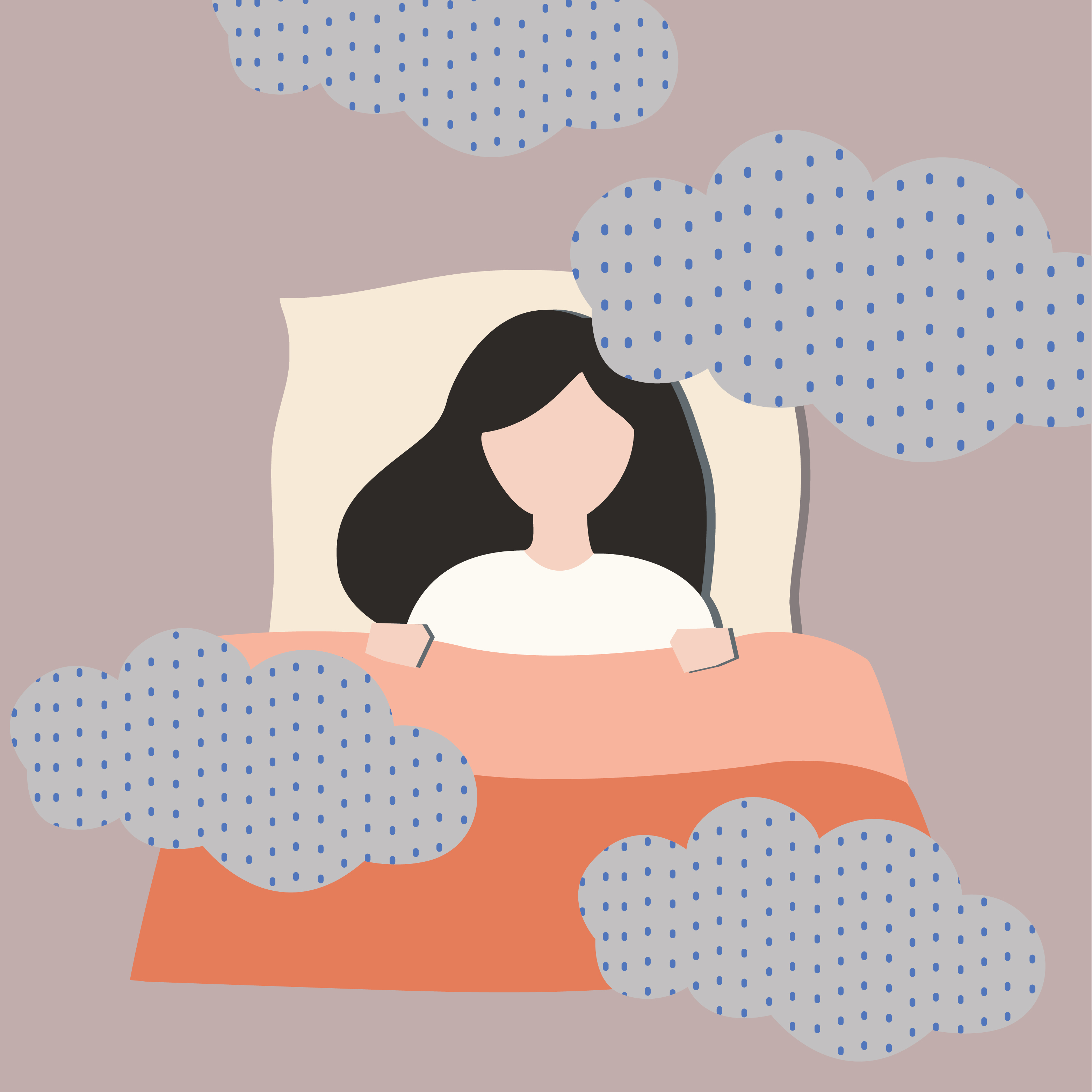Jun 02, 2025
UNDERSTANDING MENSTRUAL CONDITIONS: FROM ENDOMETRIOSIS TO ADENOMYOSIS
Menstrual health is an essential part of overall well-being, yet conditions like endometriosis and adenomyosis can make it particularly challenging to feel in control. These conditions are more than just medical terms—they’re experiences that often bring pain, confusion, and disruption to daily life. Despite their differences, both share a common need for greater awareness and understanding.
In this article, we’ll break down what these conditions are, explore their symptoms and impacts, and highlight ways to seek the right support. Whether you’re navigating these challenges yourself or supporting someone who is, understanding menstrual conditions is the first step toward empowerment and relief.
What’s the Difference Between Endometriosis and Adenomyosis?
At first glance, endometriosis and adenomyosis may appear similar - they both stem from the uterine lining behaving abnormally. However, the conditions differ in how and where this occurs:
- Endometriosis happens when tissue similar to the lining of the uterus starts growing outside the uterus, often attaching to other organs like the ovaries or fallopian tubes. This tissue behaves as it would inside the uterus, which can lead to pain, inflammation, and scar tissue.
- Adenomyosis, on the other hand, happens when the uterine lining grows into the muscular wall of the uterus itself. This can lead to an enlarged uterus, heavy bleeding, and intense cramping.
While both conditions fall under the umbrella of menstrual disorders and share symptoms like pelvic pain and heavy bleeding, they affect people differently due to their distinct causes and locations. Understanding these differences is essential for accurate diagnosis and effective treatment, helping individuals manage their unique experiences more confidently.
Recognising the Signs: Could You Have Endometriosis or Adenomyosis?
Understanding what’s happening with your body can be challenging, especially when symptoms overlap with other health conditions. While this isn’t a substitute for medical advice, there are some common signs that might signal it’s time to consult a healthcare provider. These are general indicators to help guide your next steps and start a conversation about what could be going on:
Symptoms of Endometriosis
Here are some general symptoms that may suggest endometriosis, though they can vary from person to person:
- Painful periods that go beyond what’s typical.
- Discomfort during intercourse or bowel movements.
- Heavy menstrual bleeding or spotting between cycles.
- Difficulty getting pregnant.
Symptoms of Adenomyosis
Similarly, these are some common signs that may indicate adenomyosis, though experiences differ:
- Heavy or prolonged periods.
- Cramping that feels sharper or more intense than usual.
- Pressure or bloating in the lower belly.
- A noticeably enlarged or tender uterus.
It’s important to know that these symptoms don’t automatically mean you have a specific condition, but they’re also not something to brush off as “just part of life.” If you’re experiencing any of these signs, reaching out to a healthcare provider can help you better understand what’s going on and explore the next steps.
Living with Endometriosis and Adenomyosis
Living with chronic conditions like endometriosis and adenomyosis can be physically and emotionally draining. The persistent pain and unpredictability can disrupt your daily life, impacting everything from work and social plans to your relationships and overall mental health. However, it’s important to remember that you don’t have to navigate this journey on your own. With the right strategies and support, there are ways to manage the challenges and find relief, helping you reclaim a sense of control and balance in your life.
Practical Tips for Managing Life with Endometriosis and Adenomyosis
Track your symptoms
Keeping a detailed record of your symptoms is a simple yet powerful tool for managing these conditions. Use a journal, calendar, or period-tracking app to log key details such as:
- The severity and type of pain you experience (e.g., cramping, pelvic pain, back pain).
- The duration and flow of your periods, noting any irregularities or heavy bleeding.
- Other related symptoms, such as bloating, fatigue, or discomfort during specific activities like eating or exercise.
- Any lifestyle factors or triggers, like stress levels, diet, or physical activity, that might influence your symptoms.
Not only does this help you identify patterns and potential triggers, but it also provides valuable information to share with your healthcare provider. This data can lead to more accurate diagnoses and tailored treatment plans, empowering you to take a more proactive role in your care.
Explore self-care options
Self-care is a vital part of managing the pain and discomfort associated with endometriosis and adenomyosis. While it’s not a cure, small adjustments to your routine can make a meaningful difference in how you feel. Consider:
- Gentle Movement: Activities like yoga, stretching, or low-impact exercises can help reduce muscle tension and improve circulation, which may ease pain. Focus on listening to your body and moving in ways that feel supportive, not strenuous.
- Heat Therapy: Applying heat packs or taking warm baths can provide immediate relief for cramps or pelvic discomfort. Heat helps relax muscles and improve blood flow, which may reduce pain intensity.
- A Nourishing Diet: Eating a balanced diet rich in anti-inflammatory foods - such as leafy greens, fatty fish, nuts, and whole grains - can help support your overall health. Avoiding processed foods, caffeine, and excess sugar may also reduce symptoms for some people.
Experimenting with these strategies can help you find what works best for your body, giving you tools to manage symptoms in the moment.
Build a support network
Living with chronic conditions can feel isolating, but you don’t have to face it alone. Having a strong support system can make a world of difference. Here are some ways to build one:
- Friends and Family: Share your experiences with those closest to you. Let them know how they can support you, whether it’s by simply listening or helping on tough days.
- Healthcare Providers: Work with a doctor or specialist who understands these conditions and can offer personalised advice and treatment options.
- Online Communities: Join support groups or forums where others with similar experiences share their journeys. Connecting with people who truly understand what you’re going through can be incredibly validating and uplifting.
- Professional Support: Consider working with a therapist or counsellor to address the emotional impact of living with these conditions. Chronic pain can take a toll on mental health, and professional guidance can help you navigate feelings of frustration, anxiety, or sadness.
Feeling understood and supported can help reduce stress and give you a sense of empowerment in managing your condition.
Exploring Treatment Options for Endometriosis and Adenomyosis
Treating endometriosis and adenomyosis is not a one-size-fits-all approach. The best treatment will depend on your specific symptoms, overall health, and personal goals - whether that's managing pain, improving quality of life, or addressing fertility concerns. Your doctor will work with you to determine the most suitable options, which may include a combination of medical, surgical, and lifestyle interventions.
Medication
For many people, medications are the first line of defence in managing symptoms:
- Painkillers: Over-the-counter pain relief, such as ibuprofen or paracetamol, can help alleviate mild to moderate pain. While these won’t treat the underlying cause, they can make day-to-day life more manageable.
- Hormonal Therapies: Birth control pills, progestin-only treatments, or gonadotropin-releasing hormone (GnRH) agonists may be prescribed to regulate menstrual cycles, reduce pain, and slow the progression of the condition. These therapies work by altering hormone levels, which can decrease the severity of symptoms.
It’s important to work closely with your doctor to find the medication that best suits your needs, as some treatments may have side effects or require adjustments over time.
Surgical Treatments
When symptoms are severe or other treatments aren’t effective, surgical options may be considered:
- Laparoscopic Surgery for Endometriosis: This minimally invasive procedure is often used to remove or reduce endometrial growths outside the uterus. For some, it can significantly improve pain and enhance fertility. However, recurrence of symptoms is possible, so it’s not always a permanent solution.
- Hysterectomy for Adenomyosis: In extreme cases of adenomyosis, where other treatments have failed and symptoms are significantly impacting quality of life, a hysterectomy (removal of the uterus) may be recommended. This is typically considered a last resort and is only suitable for those who no longer wish to have children.
Surgery is a significant step, and your doctor will discuss the potential benefits and risks to ensure it aligns with your health goals.
Breaking the Silence Around Menstrual Health
Talking about conditions like endometriosis and adenomyosis isn’t always easy, but normalising these conversations is essential. The more openly we share, the easier it becomes for others to recognise their symptoms and seek help sooner.
If you’re living with one of these conditions, know that you’re not alone. A growing community is raising awareness, supporting one another, and advocating for better treatment options. Endometriosis and adenomyosis aren’t just medical terms—they’re real challenges that can deeply impact daily life.
Whether you’re navigating painful periods, searching for answers, or exploring new treatments, prioritising your health and advocating for yourself is key. A combination of medical care, lifestyle adjustments, and a strong support network can make a meaningful difference. And if you’re ever unsure about what’s happening with your body, don’t hesitate to ask questions or seek professional guidance - your well-being matters.
Blogs

Jun 08, 2022
EXPLORING PERIOD CARE IN CULTURES AROUND THE WORLD
Our TOM Talks panelist Sabina McKenna explores how different cultures around the world approach period care.
Read More
Jun 08, 2022
STOP APOLOGISING FOR HAVING YOUR PERIOD
Our TOM Talks panelist Mel Mason talks about the importance of not apologising for having your period.
Read More
Jun 07, 2022
STRESSED? NOT SLEEPING? TRYING TO CONCEIVE?
TOM Talk's panelist Georgia Hartmann discussed the links between stress, sleep and fertility.
Read More
Jun 07, 2022
STRESS AND HOW IT AFFECTS YOUR SEX DRIVE
Certified sex coach Georgia Grace is here to unpack the link between stress and sex.
Read More